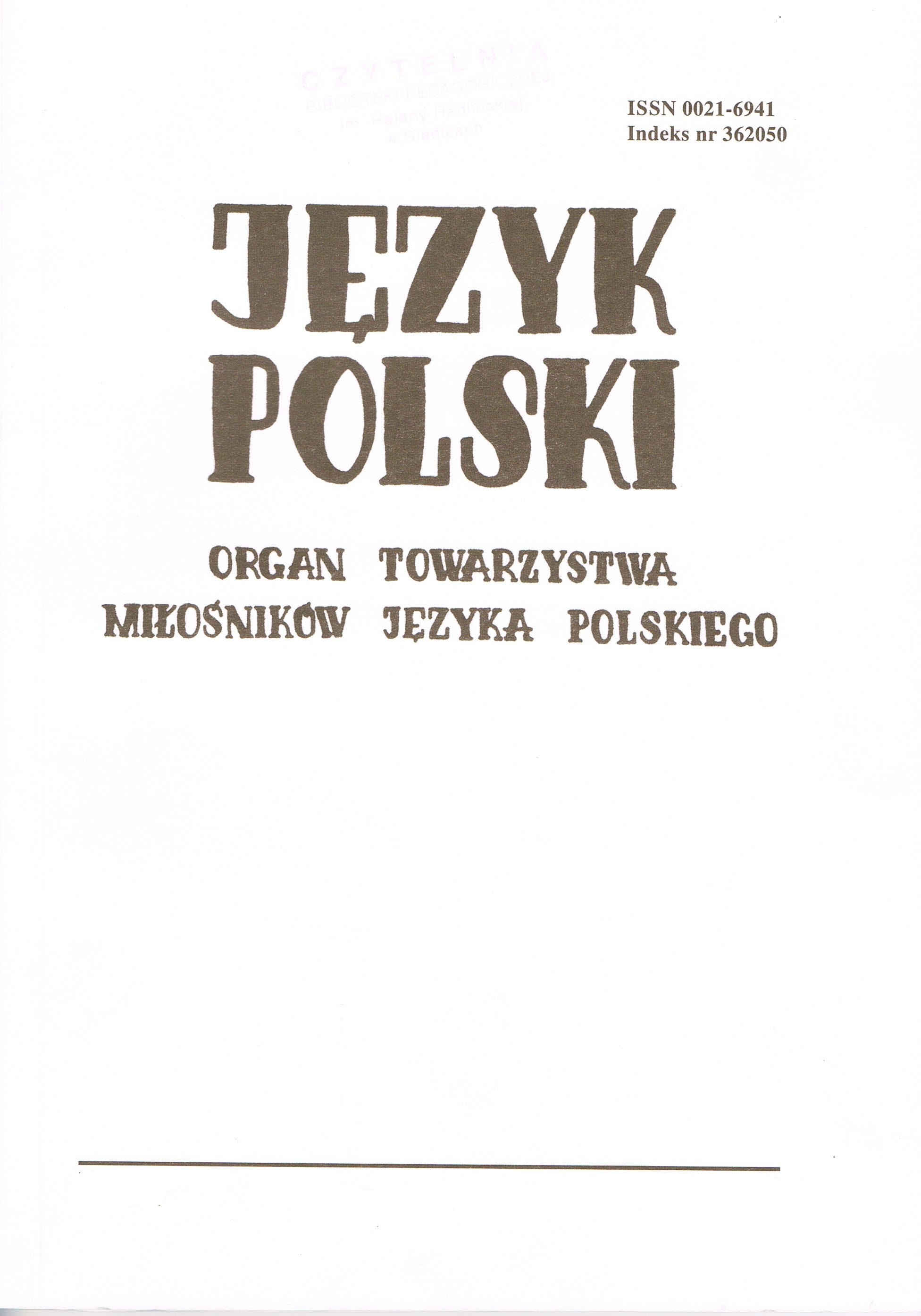Staropolskie zamyślenia. Czy właściwie rozpoznajemy formy gramatyczne w tekstach źródłowych?
Reflections on Old Polish. Do we recognize grammatical forms in source text properly?
Author(s): Zofia WanicowaSubject(s): Language and Literature Studies
Published by: Towarzystwo Miłośników Języka Polskiego
Keywords: active past participle (called the second); Old Polish language; Old Czech language; Latin
Summary/Abstract: The past perfect of Old Polish verbs was a compound tense that was formed in 3. singularis masculini by combining the active past participle (participium praeteriti activi) ending with -ł and an auxiliary verb jest, for example niosł jest. In the 15th century, the auxiliary verb jest was already advanced in perishing. As a result of this process the active past participle ending with -ł (for example "niosł") became equal with 3. singularis masculini praeteriti "niosł". A contemporary researcher of Old Polish faces huge difficulties with noticing the problem at all as well as with establishing a proper form of a given verb. The article describes problems in this area and methods of solving them.
Journal: Język Polski
- Issue Year: 2012
- Issue No: 2
- Page Range: 92-101
- Page Count: 10
- Language: Polish

